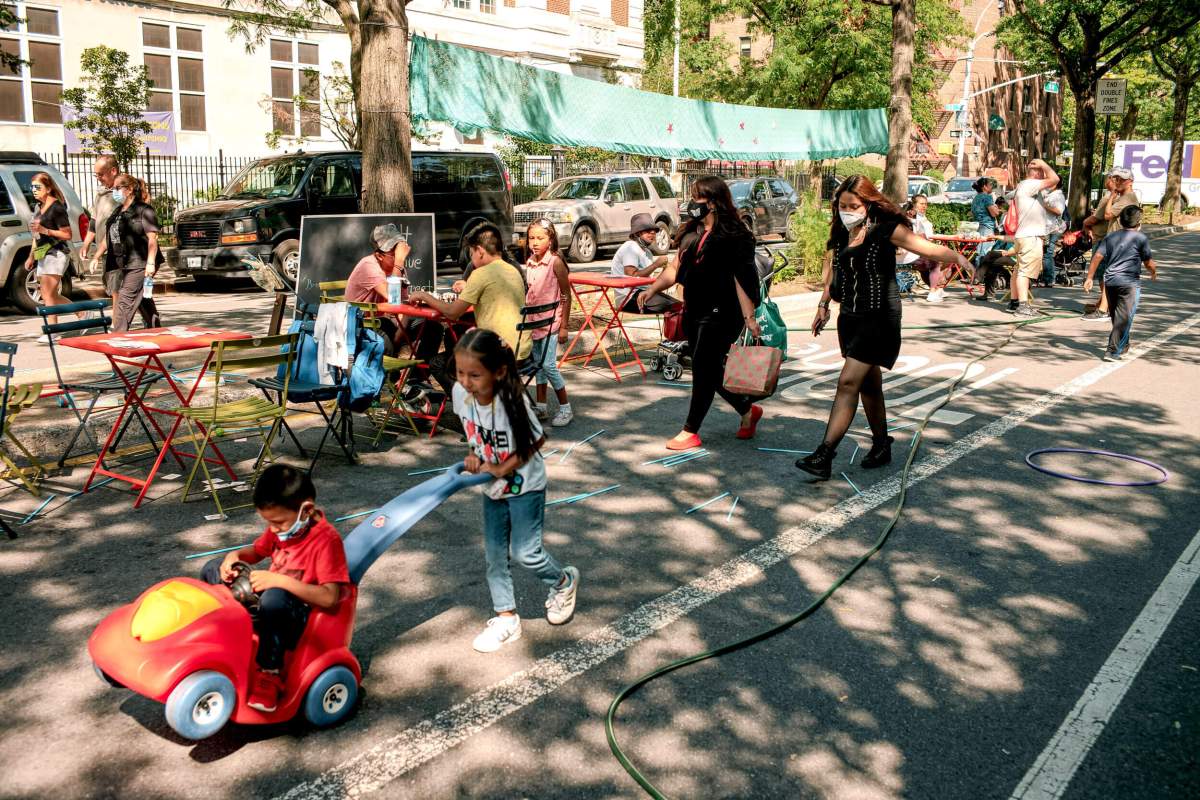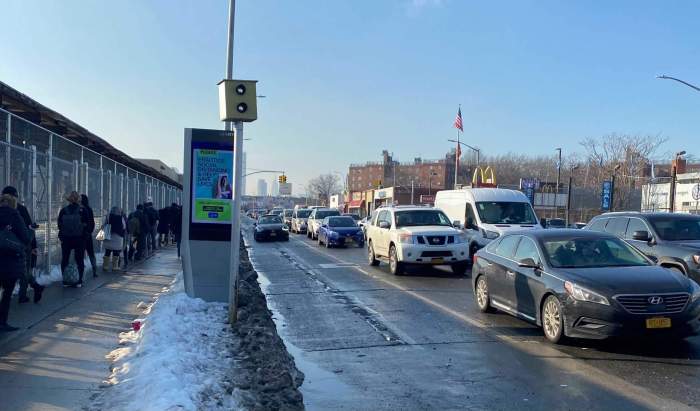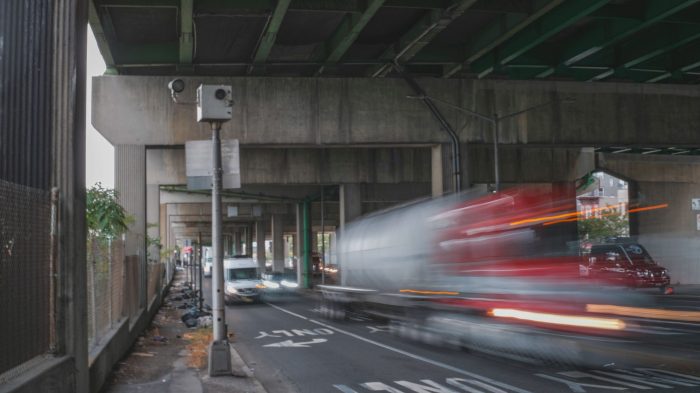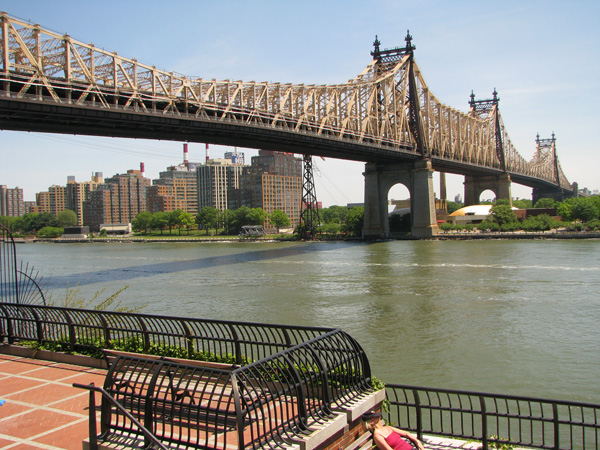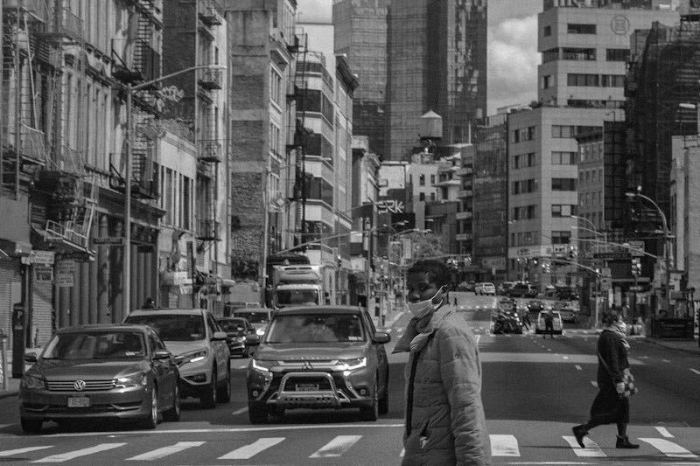Just 24 miles of Open Streets were actually active in New York City this summer even though Mayor Bill de Blasio promised to roll out 100 miles of road restricted to car traffic, a new study by the safe street advocacy group Transportation Alternatives revealed.
The analysis of each of the city’s nearly 300 Open Streets listed by the Department of Transportation found an unequal distribution and quality of the pandemic-era program, with wealthier and whiter areas getting more and better car-free avenues.
“Mayor de Blasio has broken his promise to expand the program equitably. All communities deserve Open Streets and the health, climate, and safety benefits they provide,” said Transportation Alternatives executive director Danny Harris in a statement. “We demand that New York City elected officials make urgent changes to ensure the Open Streets program has the support it needs to succeed and grow, especially in communities currently left out.”
There are 274 Open Streets in the Big Apple but only 126, or 46%, of them were active, according to the TransAlt report based on 791 crowd-sourced reports by 350 volunteers of every such street in the Five Boroughs over the summer.
The active rates vary widely by borough, with Manhattan boasting 8.06 miles of actually open Open Streets, or 66% of its share, while The Bronx had a meagre 0.53 miles, or 16%.
Only one-in-five New Yorkers lived within walking distance, defined as a quarter-mile, of an active Open Street, and areas that were 75% or more white, the report found them to be four times as likely to be car free than if 75% of residents were Black.
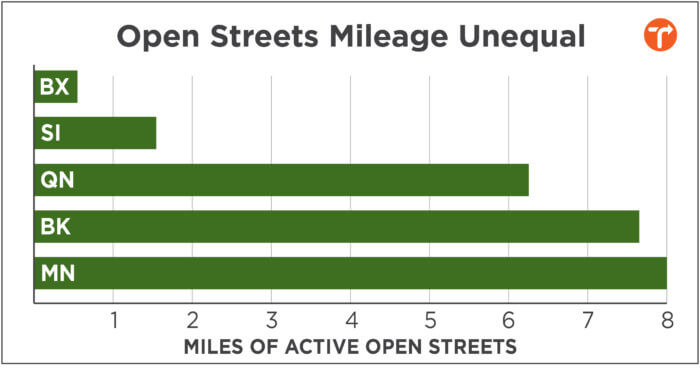
After pressure from advocates and the City Council, Mayor de Blasio launched the Open Streets program in the spring of 2020 as a temporary measure to give pent-up New Yorkers more outdoor space, closing off blocks of the city’s roughly 6,300 miles of streets to most car traffic for a limited number of hours and days each week.
The program relies heavily on volunteer labor and local business improvement districts, which has led to repeated conflicts between the people trying to maintain the spaces and drivers miffed by the inconvenience.
In his 2021 State of the City, de Blasio announced he would be making the program permanent, vowing that “equity and inclusion will be at the heart of the Open Streets expansion, with underserved neighborhoods getting new opportunities to participate.”
However not all Open Streets are created equal and surveyors for TransAlt’s report were also asked to rate the Open Streets they visited on a scale of one to 10, based on how inviting they were, their length, the quality of barricades, and how many cars still passed through.
The city averaged a rating of 4.3/10 with Manhattan once again topping the list at 5/10 and The Bronx also again at the bottom at only 2/10.
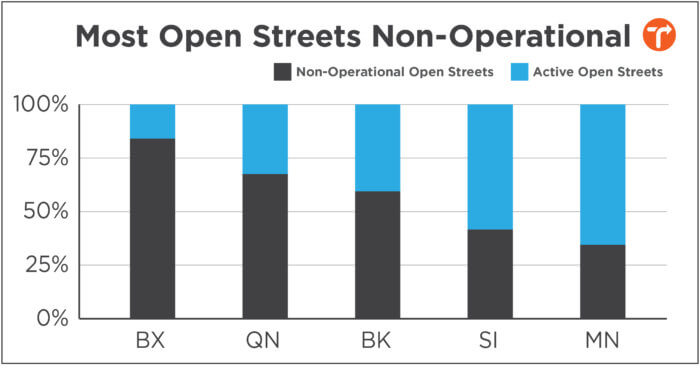
Black, Latino, and low-income New Yorkers were “significantly” more likely to live near a poorly-rated Open Street, according to the analysis and households earning $200,000 or more were more than twice as likely to live within walking distance of a highly-rated Open Street than a low-rated one.
In April the City Council passed legislation to make the program permanent and the law requires DOT to create at least 20 Open Streets in underserved neighborhoods, half of which must be no shorter than five blocks.
De Blasio and the Council also allocated $4 million out of the $98 billion city budget to help maintain Open Streets.
But the advocates called on the city to go further, demanding officials to lengthen all Open Streets to at least half a mile — or about 10 blocks — and put in more permanent measures to make them operational 24/7, such as bollards and barriers.
The city could also discourage or slow down car traffic by cutting parking on the Open Streets and extending the curb.
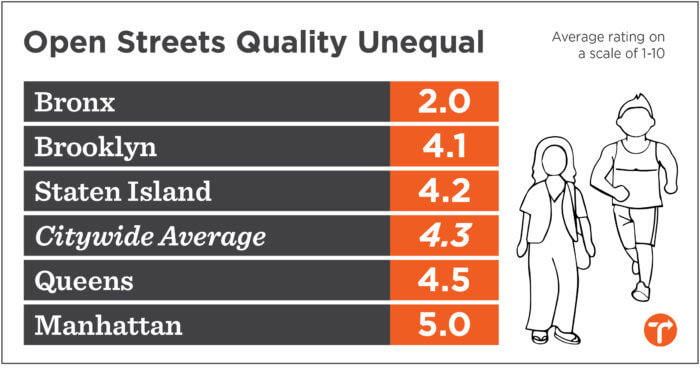
DOT spokespeople claimed that all 47 miles of Open Street listed as active on DOT’s website were still in operation and that they check them frequently, and a rep maintained that equity and fairness remain at the center of the program.
“Open Streets were an emergency response to the pandemic, and now we are taking the necessary steps to make this program permanent and sustainable in the long term,” said Seth Stein in a statement. “Equity and fairness have been central to this program from the start, and we are doing outreach to neighborhoods that lack community groups or BIDs so they get the support necessary to take part in the program no matter what. We look forward to reviewing this report and any recommendations to make this already successful program even better.”



